 Home
Gallery
Contact
Events & Projects
Projects: 2019 On
Film & TV
Archive & Links
Home
Gallery
Contact
Events & Projects
Projects: 2019 On
Film & TV
Archive & Links
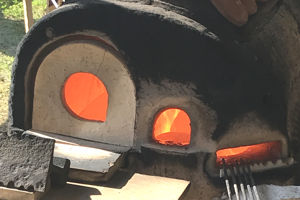
 Home
Gallery
Contact
Events & Projects
Projects: 2019 On
Film & TV
Archive & Links
Home
Gallery
Contact
Events & Projects
Projects: 2019 On
Film & TV
Archive & Links
|

|
2019 IFoG Furnace and Lehr at Stourbridge - Glassblowing at Stourbridge
Projects: 2019 Onwards
Daub Creation
Furnace Build
Lehr Build
Furnace Disassembly & Reassembly
Testing Furnace for Size
Lehr Disassembly & Reassembly
Collars, etc.
Assembly at Stourbridge
Glassblowing at Stourbridge
Disassembly at Stourbridge
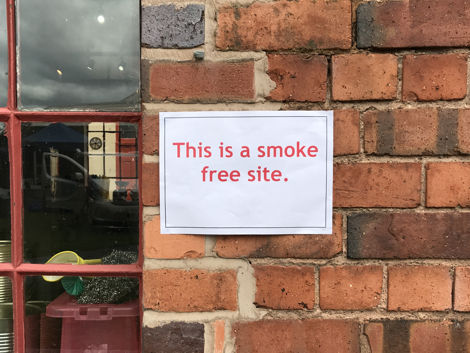
|
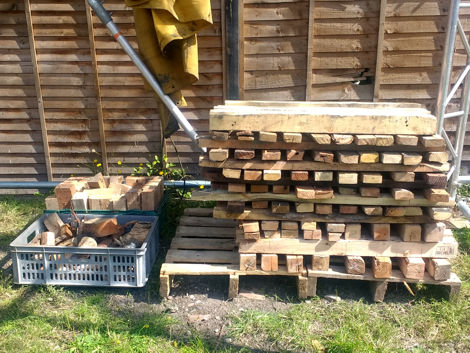
|
|
Blowing Glass
On Wednesday we were joined by American glassblower Jason Klein, who stayed for the whole of the Festival. Another American, Matt Urban, blew glass with us for several sessions over the Festival period. A few other glasssblowers also tried out the furnace. Bettina Birkenhagen, the director of the Roman Villa Borg in Germany, also joined us for three days to help with running the furnace and for some glassblowing. The régime for each day soon settled into lighting the furnace at about 7am, filling the pots at lunchtime, lighting the lehr and blowing glass during the afternoon, emptying the pots at about 6pm, stopping up the stoke hole and gathering holes and leaving the furnace until the next morning, when it was relit. The lehr fire was also allowed to die down and the stoke hole stopped up. There was some residual heat in the furnace in the morning, but not enough to allow the pots to heat up quickly. Reheating the pots slowly and remelting glass dramatically cut down the blowing time. We also lost a few pots as we weren't able to run the furnace through the night. We used a soda-lime glass with a composition based on chemical analyses of original Roman glass, and which we melted at Quarley and transported to Stourbridge as small lumps of cullet. We had several colours to work with: colourless, blue-green, cobalt blue, purple and opaque white. The two large pots contained the main vessel glass (usually blue-green or colourless) and the two small pots contained small colour melts. We ran the furnace for blowing at between 1050° and 1100° centigrade, and two people could work opposite each other with no danger of impeding each other on reheats. |
Over the first three days, wood consumption was high, mainly because we were over-stoking. To lower this consumption, we had to stoke less, watch the wind direction and open and close doors as necessary, and keep the ashes and charcoal level and spread evenly over the bottom of the furnace. We also raised the logs at the entrance to the tunnel to allow plenty of air to the logs and fire, and a degree of pre-heating of the air. Keeping the firing tunnel clear was very important, as was the distribution of the burning logs in the firing chamber. We usually had three logs burning: one in the middle and one either side. After the first couple of days, we found that managing the fire properly prevented the accumulation of charcoal, so emptying charcoal out was very rare. It was useful in lighting the lehr – two or three shovelfuls was usually enough. We used about four tonnes of wood in all, but during the last few days we only used about a tonne. 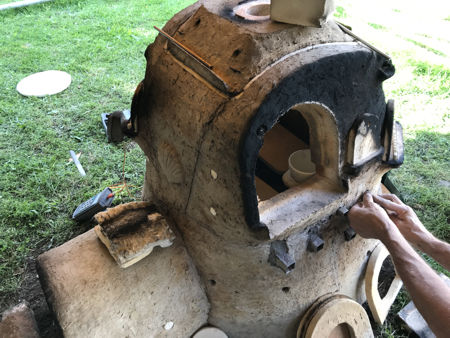
|
|
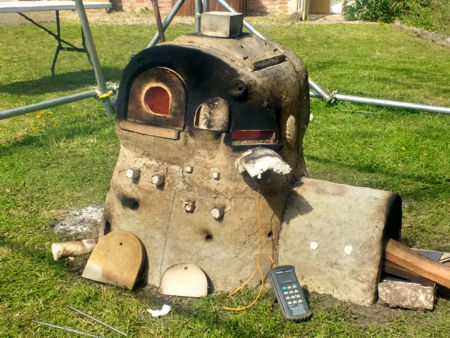
|
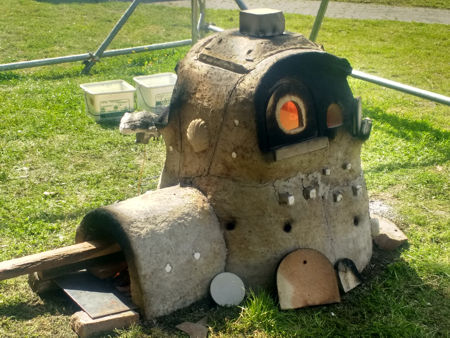
|
|
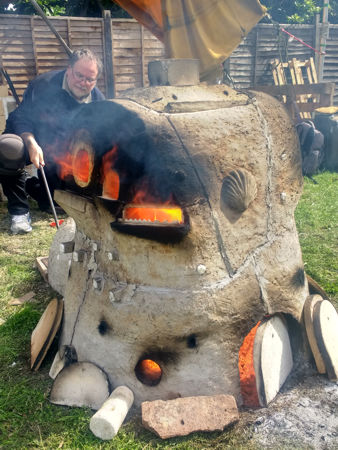
|
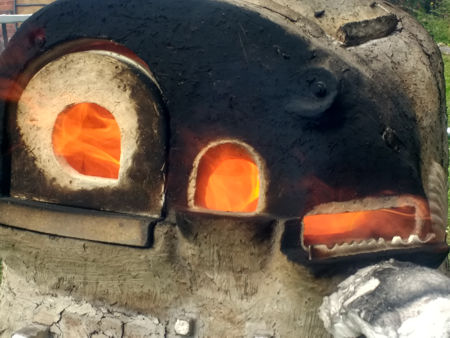
|
|
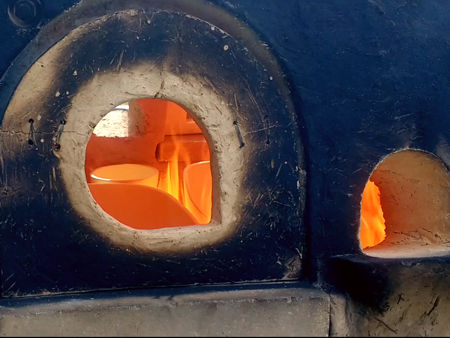
|
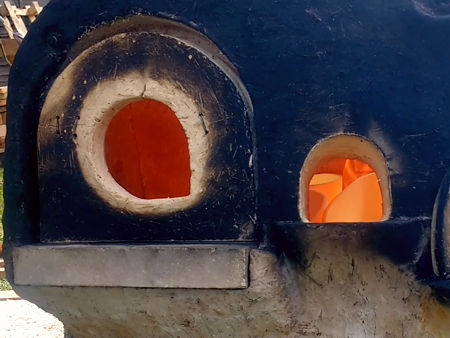
|
|
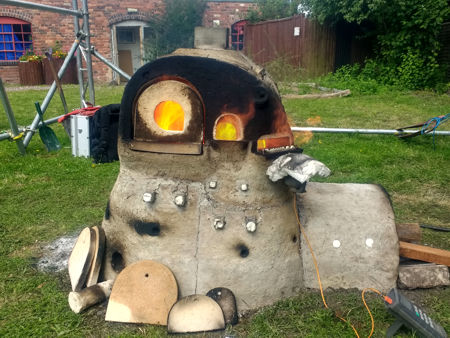
|
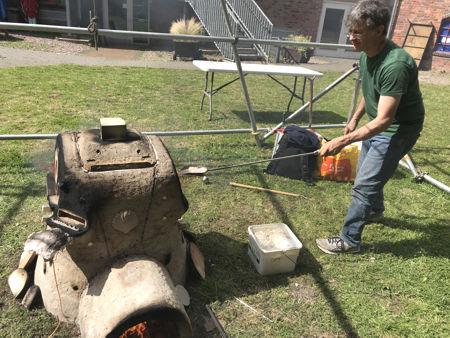
|
|
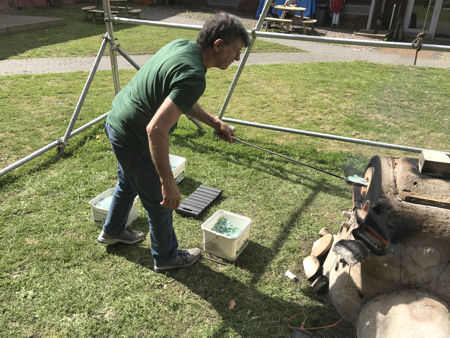
|
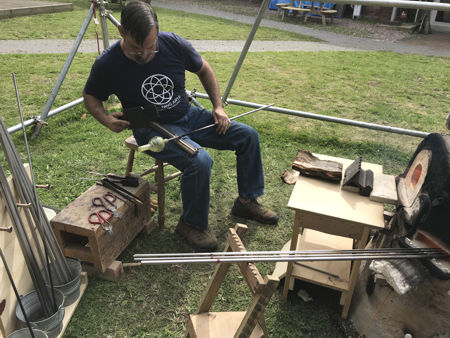
|
|
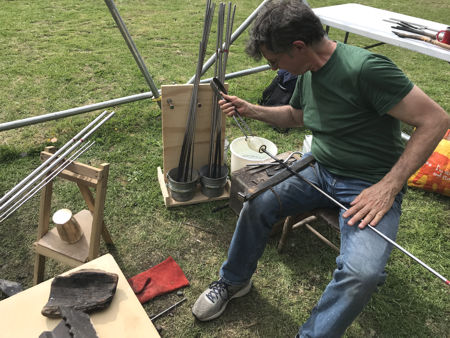
|
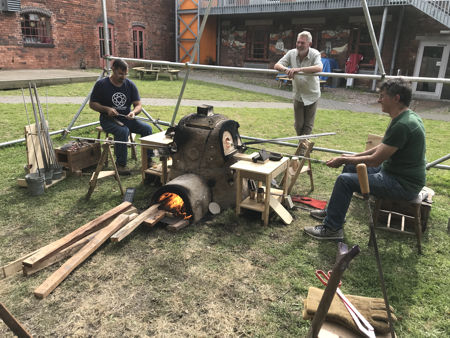
|
|
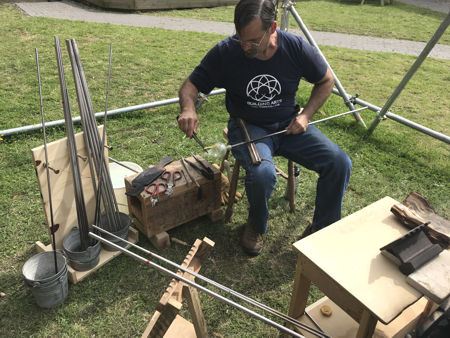
|
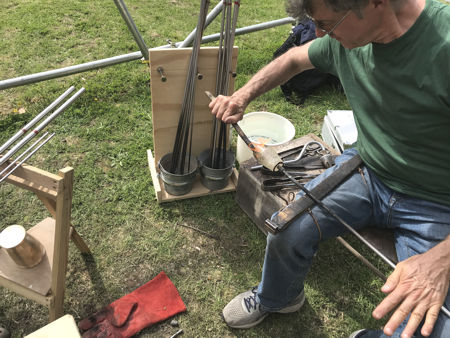
|
|
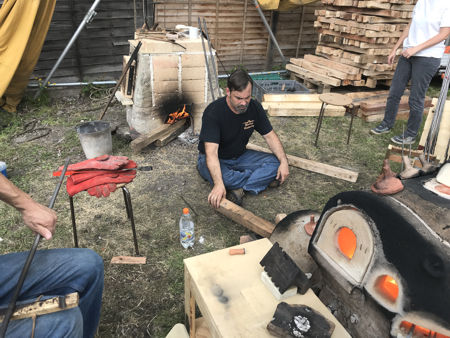
|
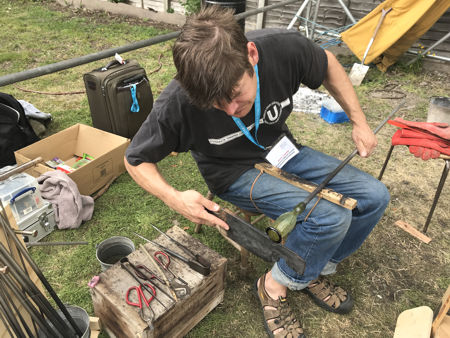
|
|
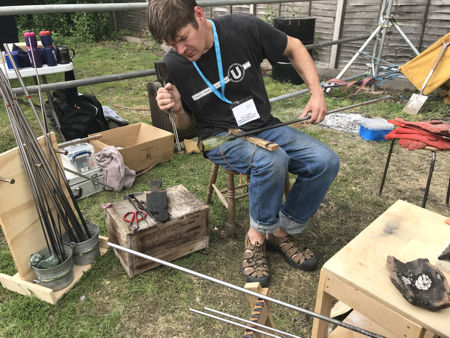
|
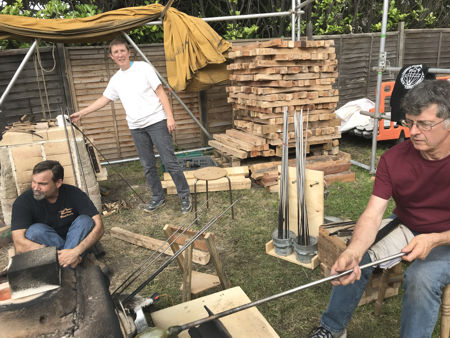
|
|
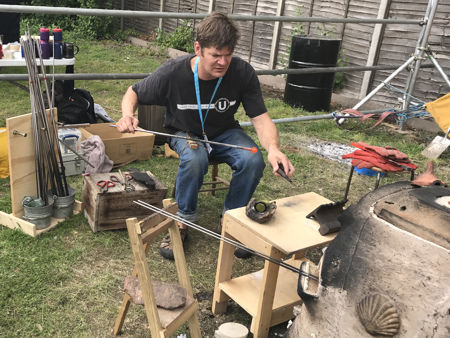
|
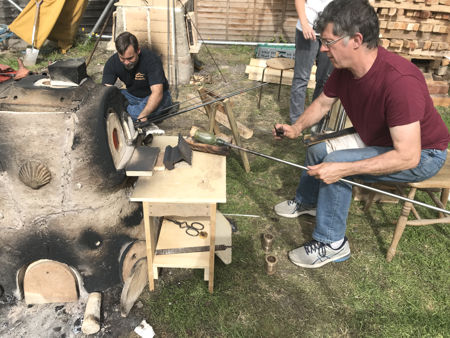
|
|
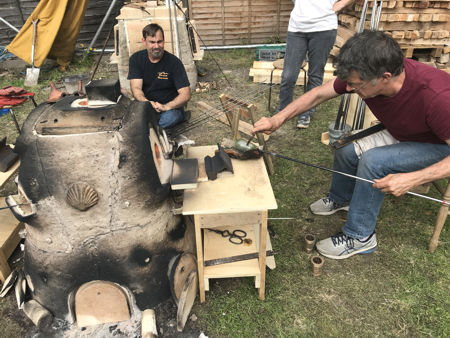
|
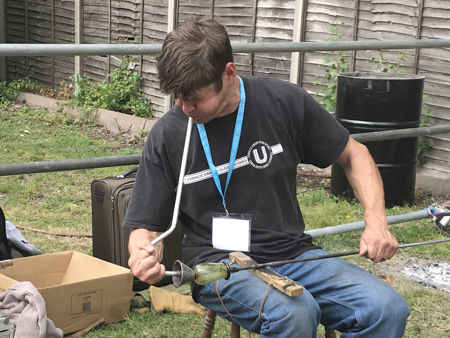
|
|
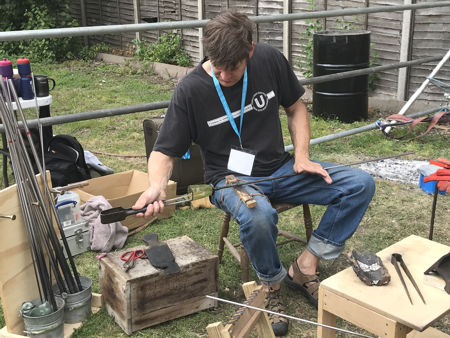
|
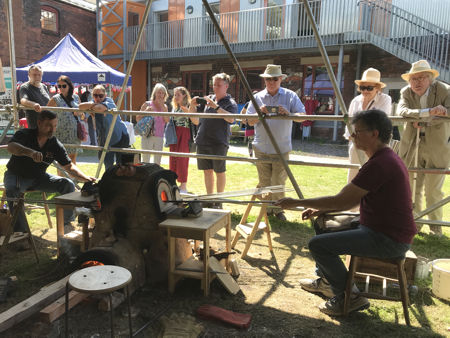
|
|
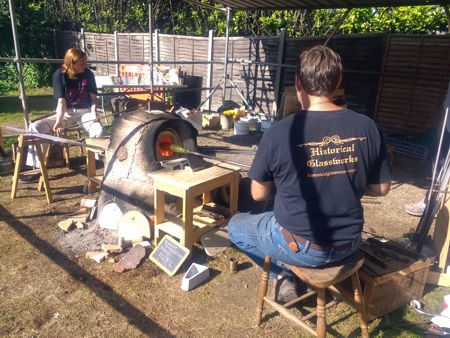
|
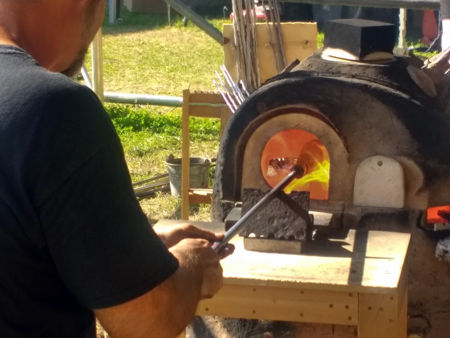
|
|
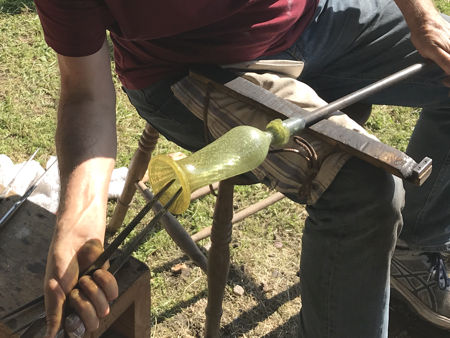
|
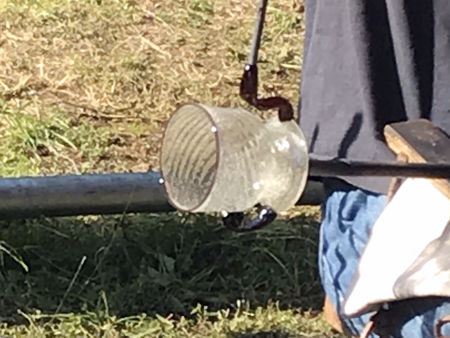
|
|
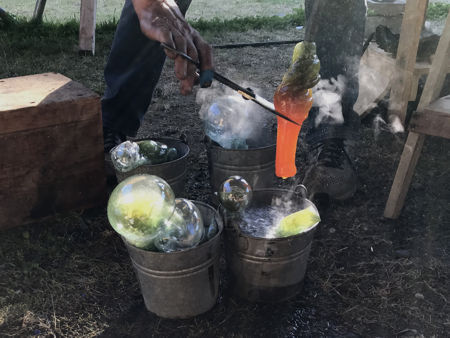
|
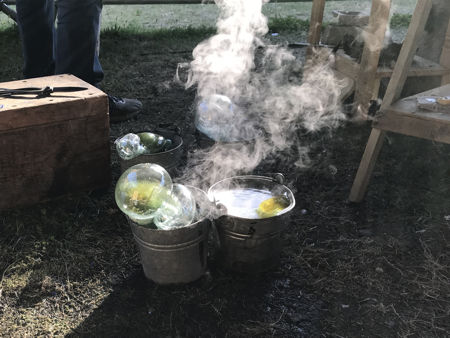
|
Home Gallery Contact Events & Projects Projects: 2019 Onwards Film & TV Archive & Links